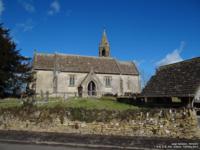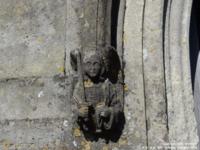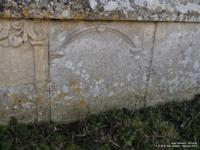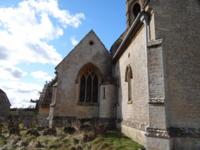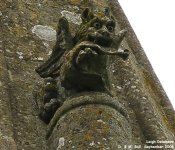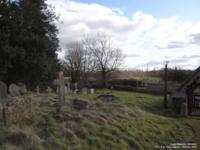|
|||||||||||||||||||||||||||||||||||||||||||||||||||||||
St. Margaret of Antioch church in Leigh Delamere is quite extraordinary. Whilst from the outside it is like many other churches (excepting the bell tower), when you go inside it is a different matter. First of all you notice it is dark - not so much the south aisle, but the Chancel, west end and north aisle has very little clear glass. However, when the eye adjusts to the conditions there are hosts of beautiful things to see. The Chancel and west ends vie for the attention first - the lighting in the chancel (at least on the days we visited) gives a serene and warmly atmosphere. One wall has no windows, one wall has a small one with yellow glass and the third has windows with coloured glass, but it is the light from the yellow glass that gives it this atmosphere - it almost feels like candels have been lit and placed around the room. Add to this a highly decorated ceiling with corbels and bosses, the stone reredos with the figure of Christ with open, welcoming arms. Much of the nave has no windows, just the west window which is large with coloured glass depicting the crucifixion. It is magnificent - the colour, the detail, the size. All the windows in the church are by Thomas Wilmshurst. Elsewhere there are many other things to see; stone carvings, carved pew end, an old stone tablet of Christ on the cross, the decorated organ, the bosses, corbels and much more. There is a history leaflet available inside the church written by Geoffrey K. Brandwood and published by the Churches Conservation Trust - any facts given on these pages come from this very informative leaflet. Geoffrey has done a splendid job in researching the history of this building and we are grateful he has shared his knowledge with us, the visitors. The church of St. Margaret is a Grade II* listed building - more information about the listing can be found at the Historic England website. The church is now 'redundant' and is now maintained by the Churches Conservation Trust. They do a magnificent job looking after our ancient churches which have become redundant and no longer used as a church. They rely on donations so please support them if you are able because without organisations like this, these buildings would simply be lost for ourselves and future generations to visit and admire. Reading the history leaflet explains why this church feels like an old one but is in fact relatively new. The church was re-built in the 1840s but kept to the plan of the original building, with some modifications. Should you read the Wiltshire Collections entry for this church, please bear in mind it was written in the 1660s so talks about the original building and not this one. The original building was demolished as it had become dangerous, and this building was constructed from 1846. The original reredos and some of the church stone went to build a school at nearby Sevington. |
|||||||||||||||||||||||||||||||||||||||||||||||||||||||
|
|||||||||||||||||||||||||||||||||||||||||||||||||||||||
HOME
|
Contact Us
|
Copyright
|
Donate
|
FAQs
|
Links
|
Location Index
|
Sponsors
|
Surname Search
|
Us
|
War Memorials
|
Wiltshire Collections
|
|||||||||||||||||||||||||||||||||||||||||||||||||||||||
|
|
|||||||||||||||||||||||||||||||||||||||||||||||||||||||




